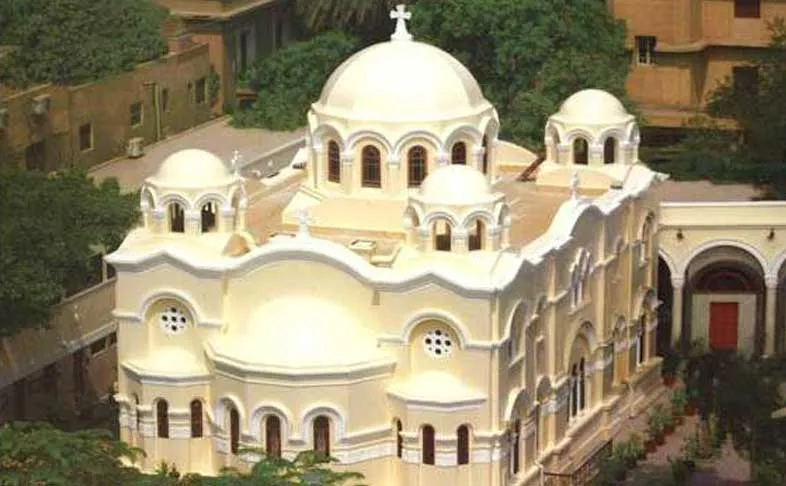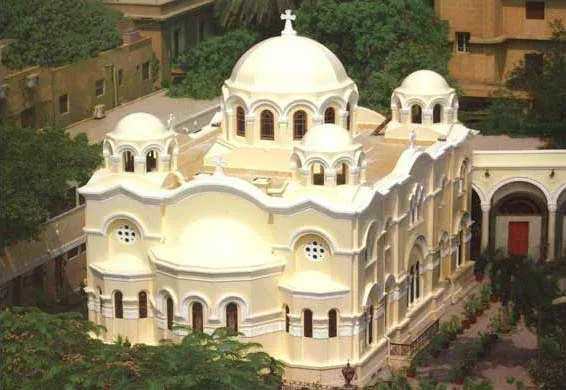
Introduction
Our Lady of Zeitoun, also known simply as El-Zeitoun, Zeitun or rarely Our Lady of Light, was a mass Marian apparition that was reported to have occurred in the Church of the Virgin Mary, Zeitoun district of Cairo, Egypt.
The Church of the Virgin Mary at Zeitoun (The Apparition Church) was built by Tawfik Khalil Ibrahim, under the supervision of the Italian architect Leomingelli. The church was designed as a miniature of the Hagia Sophia church in Istanbul, Turkey. Allegedly based upon a vision Ibrahim had seen, it is said that the Virgin Mary told him that she would appear in her church at Zeitoun after forty years. The church was consecrated during a mass on June 29th, 1925. According to tradition, the site is one of the locations where the holy family stayed during their flight into Egypt.
On 1924; some of Zeitoun Copts though to build a church as there was not utterly any church in this big suburb. Accordingly they recurred the deceased; Mr. Khalil Ibrahim [he was a rich man] and they requested him to donate and contribute by a piece of terrain with a view to build the church. Mr. Khalil promised them to satisfy their request.
The Copts started to collect the donations and benefactions and during this time, Mr. Khalil is died. consequently; they went to Mr. Khalil Ibrahim`s son, Mr. Twafik, in order to give him all the collected money which was 450 EGP. But Mr. Tawfik apologized about the acceptance to receive such money claiming to return all the collected money to their moneyed and saying: “my father was planning to build the church at his own expense. Then I will be adhered to my father’s parole and take the responsibility to fulfill it instead of him”.
Hence, Mr. Twafik agreed with an Italian engineer named “Lymophly” in order to make a design for the Saint Mary church in Zeitoun akin to Aya Sophia in Constantinople.
History of Saint Mary Church, Zeitoun
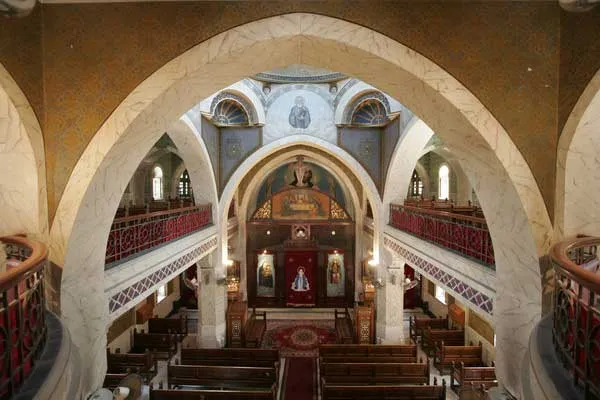
The church was built in 1925. It has been inaugurated by Bishop Athanasios; bishop of Bany Sweif and the first priest who served in it was the deceased Hegomen Father Daniel Messeha.
Regarding the surface area of the church, it is 250 m². It has five cupolas: the central one is the biggest. It is 17 meter high and has windows that are opened on the nave and on its top, there is a big cross. But the other four cupolas are less big with 12 meter high and have apertures but not related to the church as their floor is the overhead and the ceiling of the church.
Inside the church, there are several icons for Saint Mary, the Angels and the Saints.New icons have been painted subsequent to the apparition of Saint Mary such as a picture for Saint Mary in the principal cupola of the church as well as some of the icons which have been gifted to the church by the Emperor “Haile Sellassie” upon his visit to the church.
The church was designed to surround maximum of twenty families but since the apparition of Saint Mary in it, its public reaches millions.
One of the blessings of Saint Mary`s apparition in the church; the terrain that was a garage for the public transportation and was just in front of the church became the place where was built a big Cathedral which is considered now as the second big Cathedral in the Middle East pertaining to its area.
The foundation stone of the church was put by the sanctity of the Pope Shenouda III on Thursday march 25, 1976.

Apparition of Our Lady of Zeitoun
On the evening of Tuesday, 2 April 1968 (24 Baramhat 1684 in the Coptic Calendar), sightings of the Virgin Mary and associated phenomena were reported by a group of individuals at the church. Luminous scenes were reported to be seen over the domes of St. Mary church at Zeitoun. The first apparition was seen by the workmen of a garage belonging to the Public Transport Authority opposite the church. Among them was the watchman, Abdul Aziz Ali, who saw a luminous body of a young lady kneeling next to the cross located on the largest dome of the church.
Ali started shouting, “A light over the dome!” Then he called upon his fellow workers to look at the lady on the roof of the church. Some of them thought it was a young lady trying to commit suicide, so they shouted a warning to her. She was standing over the dome in her white robe, and she was holding in her hand what appeared to be an olive branch. Then they saw her moving, and a light was emanating from her body all around her. After identifying her as the Virgin Mary, they began shouting, “It is the Virgin… It is Virgin Mary.”
This apparition was reported to be accompanied by various spiritual phenomena including:
- Spiritual bodies in the form of doves, flying with great speed, breaking through the sky over the church.
- Stars dropping very rapidly above the domes and over the roof of the church.
- Flashes, like lighting, radiating from the church domes, mainly from the northeast dome.
- Fragrant incense spreading and filling the place over the central dome, the roof, and the church itself.
- Luminous clouds over the church domes, in the form of the Virgin Mary.
In 1971, after the “miracle of Zeitoun”, the Egyptian artist Yacoub Fanous painted additional icons on the walls of the church. He adorned the apse with a painting of Jesus Christ Pantocrator and, on the dome that was hitherto adorned with stars on a blue background, he painted the Virgin Mary with outspread arms.

Apparition to the Locals
The first apparition of the Virgin Mary at Zeitoun was recorded on the evening of 2 April 1968. The phenomenon was seen by two Muslim bus mechanics, who claimed to witness a woman dressed in white on the roof of Saint Mary’s Coptic Church. One thought she was a nun about to attempt suicide by leaping from the roof, and called for police. Intrigued by the mechanics yelling “don’t jump!”, a crowd gathered at the site. The police attempted to disperse them, saying that the sighting was just a reflection of the light from the street lamps. However, a church custodian suggested the figure was the Virgin Mary, which greatly excited the crowd. The event itself ended after a few minutes.
One week later, on 9 April, the phenomenon reoccurred, again lasting for only a few minutes. After that time apparitions became more frequent, sometimes two or three times a week, for several years, ending in 1971. According to Coptic tradition, Zeitoun is near one of the locations where the Holy Family stayed during their flight into Egypt.
The patriarch of the Coptic Orthodox Church of Alexandria, Pope Kyrillos VI appointed a committee of high-ranking priests and bishops to investigate the matter, directed by Bishop Gregorios, bishop of postgraduate studies, Coptic culture and scientific research. On 4 May Pope Kyrillos VI issued an official statement confirming the apparitions. Soon afterward, the Ministry of Tourism also issued a validation of the sightings, and began printing pamphlets.
Nuns of the Society of the Sacred Heart also witnessed the apparitions and sent a detailed report to the Vatican, resulting in the arrival of an envoy on 28 April who also saw the apparitions and sent a report to Pope Paul VI. As the apparition appeared over a Coptic church, the Vatican left the investigation to the Coptic authorities.
The apparitions were also allegedly witnessed by President Gamal Abdel Nasser, and images photographed by newspaper photographers and Egyptian television. Investigations performed by the police could find no apparent explanation. No device was found within a radius of fifteen miles capable of projecting the image, and many photos were taken of the alleged apparition by independent photographers. With no alternative explanation and approval from religious and political official, the Egyptian government accepted the apparitions as true.
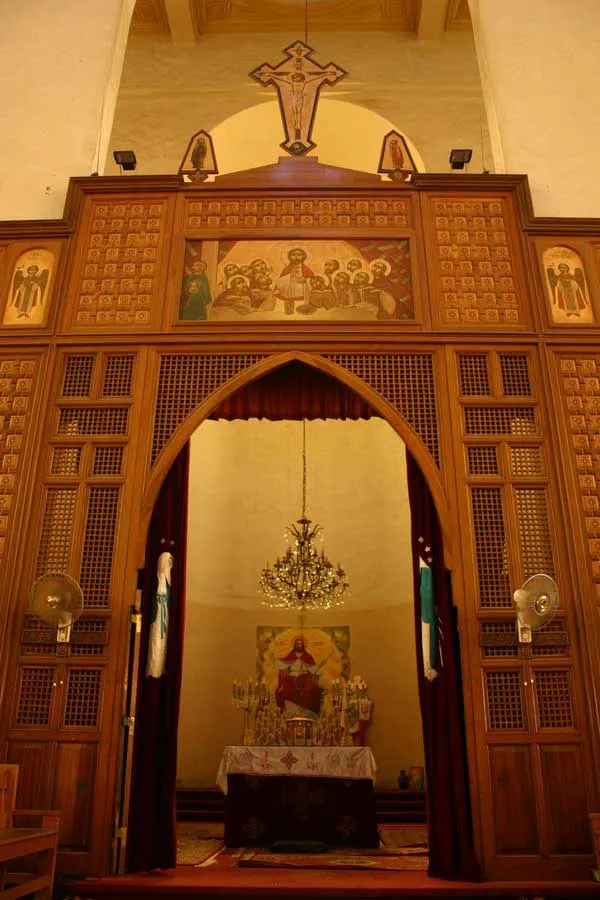
Skeptical Response
Estimates of the number of observers of the event vary greatly. Thousands were said to have flocked to the Church soon after the first announced occurrences of the phenomenon. Christian author Francis Johnston claims the apparitions were seen by a total of millions of people. Primary sources used by Johnston put 250,000 as the upper limit for a single night, though the difficulty in estimating crowd size in the dark means the number of people in the crowd may have been significantly larger or smaller.
The only secular, English-language account of the events was provided by Cynthia Nelson, a professor of anthropology at the American University in Cairo. She visited the church site on several occasions including 15 April 1968, another week later near the end of April, and on 1 June 1968. Despite reports of regular appearances of the Virgin Mary, Nelson did not see anything that could be identified clearly as such. Instead she only saw a few ‘intermittent flashes of light’ and later, a glow of ambiguous shape shining through palm trees. “But”, she admitted, “the source of the light was a mystery, for the streetlights had been disconnected all around the church for several days.”
Some authors suggest that the sightings must be considered in context. The appearances happened during a period of crisis in Egyptian history and echoed “a widespread feeling that the defeat of Egypt in the 1967 Arab-Israeli war was the result of having abandoned faith in favor of human-made ideas and belief systems”. Sociologists Robert Bartholomew and Erich Goode offer the Zeitoun apparitions as a prominent case of mass hysteria: “It appears that the Marian observers were predisposed by religious background and social expectation to interpreting the light displays as related to the Virgin Mary.”
Professor Michael P. Carroll similarly suggests that the “lights of uncertain origin” were interpreted as Mary due to the societal stresses on Egyptian society at the time, coupled with an association of the Virgin Mary with the Zeitoun area. Carroll notes that Muslims seeing the Virgin wouldn’t be unusual, as Mary is revered in Islam as well.
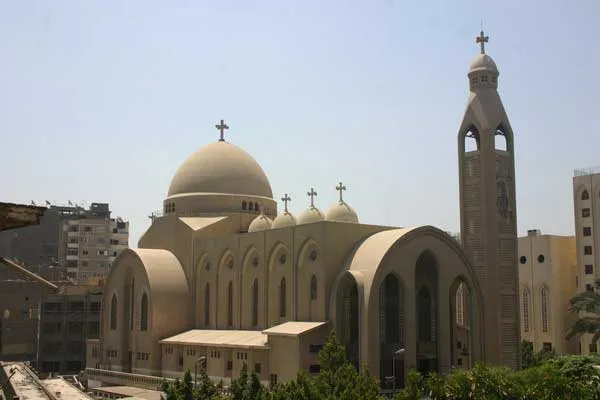
John S. Derr and Michael A. Persinger propose a possible cause of the lights themselves in Tectonic Strain Theory, the idea that the occurrence of earthquakes causes the appearance of strange lights. Indeed, Zeitoun did see some tectonic activity prior to the events of 1968-1971. Therefore, the source of the lights could have been a by-product of this seismic activity. Appearances of the lights only at night would be possible as such lights might not be visible during daytime; however, Tectonic Strain Theory has yet to provide a mechanism for how tectonic events could cause these lights.
Photos of the event are numerous, though sometimes inconsistent. Most of the photos are blurry or of poor quality, though some do seem to show the Virgin Mary regardless. One of them is either an illustration over a less detailed photo, or a complete illustration, depending on the source.
The sourcing for the most popular photo is unclear, and some skeptics have mentioned inconsistencies such as the bright sunlight on the onlookers heads, while the sky looks black, or the apparition seeming translucent despite other photographs and witness testimony describing it as opaque and very bright. In Cynthia Nelson’s report, she noted that many photos and pictures of the apparition were being sold in the marketplace, which could add a financial incentive for forgery.
Skeptoid podcast produced an episode about the apparition. They criticized Persinger’s Tectonic Strain Theory, noting that many of the so-called earthquake lights are completely explicable, such as lightning from distant storms or transformers exploding as a result of earthquake. They argue that the photographs are either suspiciously illustration-looking or do not show a human figure, and say that many drawings were hawked in the marketplace as souvenirs. The podcast concludes with a proposed explanation of the events: lights of uncertain origin were interpreted as the Virgin Mary because of societal stressors and local tradition.
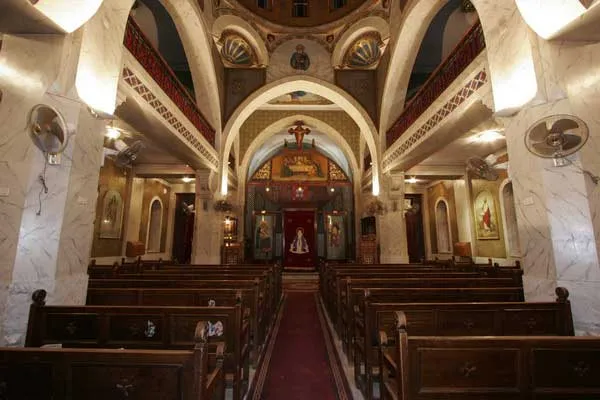
Golden Jubilee
On 12 May 2018, the Coptic Church celebrated the golden Jubilee of the event. A large number of priests and Christians from all over Egypt attended the celebration. Sub-celebrations have been held from 10 May to 13 May.
Feast Day – 2nd April
Annual Feast Day of Our Lady of Zeitoun held on 2nd April.
The Coptic Orthodox Church of Saint Mark is located in Zeitoun. On the night of April 2nd, 1968, a luminous profile of a woman who was identified as the Apparition of Virgin Mary appeared on the roof of this Church. Several witnesses were present at the scene and their detailed accounts are consistent.
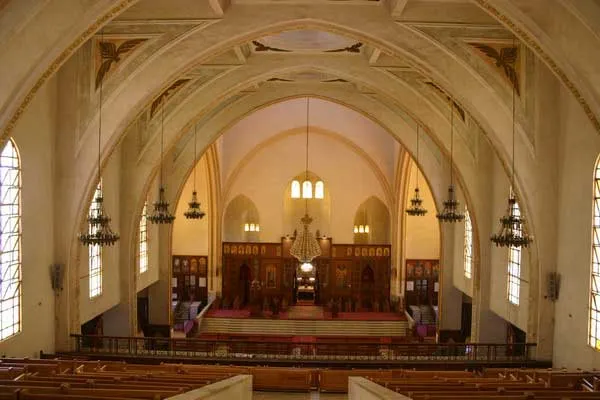
Mass Time
Weekdays
Sundays
Church Visiting Time
Contact Info
122, Tomanbay Street, El – Zeitoun,
11321, Cairo, Egypt
Phone No.
Tel : +20 222-59-2928
Accommodations
How to reach the Church
Cairo International Airport in Cairo Governorate, Egypt is the nearby Airport to the Church.
Hadayeq El Zeitoun Metro Station in Cairo Governorate, Egypt is the nearby Train Station to the Church.

